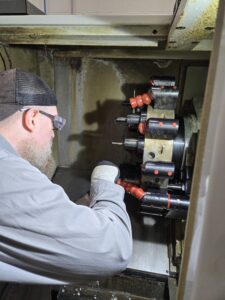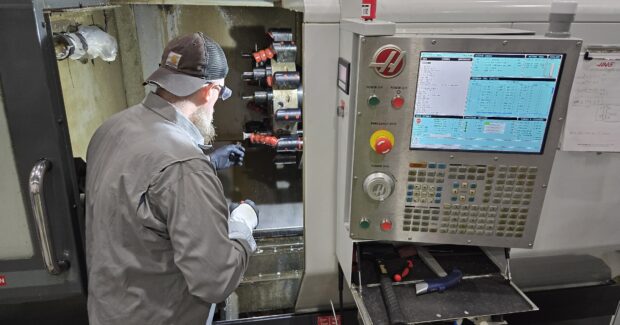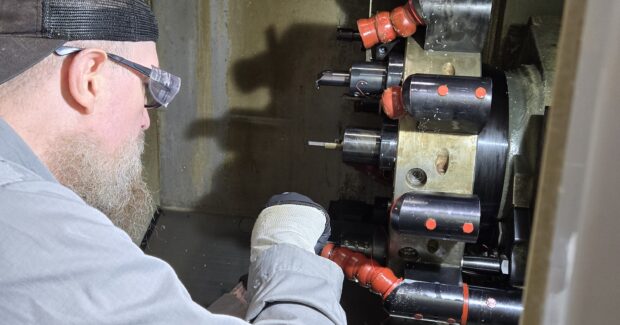Maximizing Downtime to Maintain Uptime
Create and follow effective preventative maintenance checklists for use during mandatory shutdowns.
Posted: August 28, 2024

Nobody ever says, “Let’s maximize downtime!” But when mandatory shutdowns roll around, it’s the perfect opportunity to get your machines in top condition. As the saying goes, give the machine maintenance now, or you will give the machine to maintenance later. By effectively utilizing this downtime for preventative maintenance, you can significantly reduce unexpected breakdowns and ensure sustained productivity. Outlined below are tips for creating comprehensive maintenance checklists to optimize mandatory shutdowns.
Understanding the Importance of Planned Downtime
Planned downtime is crucial for maintaining CNC machine efficiency. It allows for necessary maintenance and repairs without disrupting production. For instance, a leading manufacturing plant improved uptime by integrating planned downtime into its maintenance routine. One company, T.I.E. Industrial, supports such strategies by offering more than 150,000 CNC and robot parts, ensuring necessary replacements are available.
Pre-shutdown Planning
Effective maintenance during downtime starts with thorough pre-shutdown planning. Assess the current state of CNC machines to identify potential issues. Involve key per parts and the planning process and set clear objectives for the shutdown period, such as inspecting critical components, replacing worn parts and updating software.
Creating the Preventative Maintenance Checklist
An effective maintenance checklist should prioritize tasks. Here’s an example for CNC machines:
- Daily Tasks:
- Clean machine surfaces, tool holders and spindle.
- Check oil levels and refill if necessary.
- Inspect air supply for leaks.
- Weekly Tasks:
- Inspect and clean filters and tools.
- Check coolant levels and concentration.
- Lubricate moving parts.
- Monthly Tasks:
- Inspect belts for wear and tension.
- Check for loose bolts and tighten if necessary.
- Test machine alignment and calibrate if needed.
- Backing up CNC parameters.
- Quarterly Tasks:
- Inspect the spindle and bearings.
- Replace worn-out seals and gaskets.
- Update software and firmware.
- Annual Tasks:
- Conduct a full machine teardown and inspection.
- Ball bar testing and laser alignment.
- Replace all worn components.
- Recalibrate the entire system.
Execution During Shutdown
Communication is key during the execution phase. Ensure that all team members are aware of the plan and their responsibilities. Here’s a detailed plan:
- Morning Briefing:
- Kickoff meeting to review the checklist and assign tasks.
- Emphasize adherence to the schedule and safety protocols.
- Task Assignment:
- Electrical Team:
-
-
- Inspect and replace worn electrical components.
- Test and calibrate control systems.
-
- Mechanical Team:
-
-
- Lubricate moving parts and inspect belts.
- Replace worn seals and gaskets.
-
- Hydraulics Team:
-
-
- Check and top off hydraulic fluid levels.
- Inspect hoses for leaks.
-
- Software Team:
-
-
- Update software and firmware.
- Backup machine settings.
-
- Midday Check-In:
- Progress review meeting to address issues.
- Reassign tasks if necessary.
- Final Inspections:
- Conduct final inspections of each CNC machine.
- Verify all maintenance tasks are completed.
- Documentation:
- Record completed tasks and issues.
- Update maintenance logs.
- Post-Shutdown Briefing:
- Debriefing meeting to discuss improvements.
- Plan for follow-up tasks.
Post-shutdown Review
Evaluate the outcomes of the maintenance work. Assess whether objectives were met and identify areas for improvement. Adjust future maintenance plans based on these findings. Creating a feedback loop with team members can provide valuable insights and contribute to continuous improvement.
Additional Resources and Support
Digital platforms can aid in managing maintenance checklists. T.I.E. Industrial, for example, offers complimentary tech support and basic, intermediate and advanced CNC training to assist maintenance teams. Additionally, having a reliable source for replacement parts ensures minimized downtime.
Maximizing downtime through effective preventative maintenance can significantly boost operational efficiency. By following these steps and using the provided checklist, maintenance supervisors can ensure their teams are well-prepared for mandatory shutdowns. Start planning your next maintenance shutdown with confidence, knowing your shop has access to support and resources to achieve optimal uptime.
















